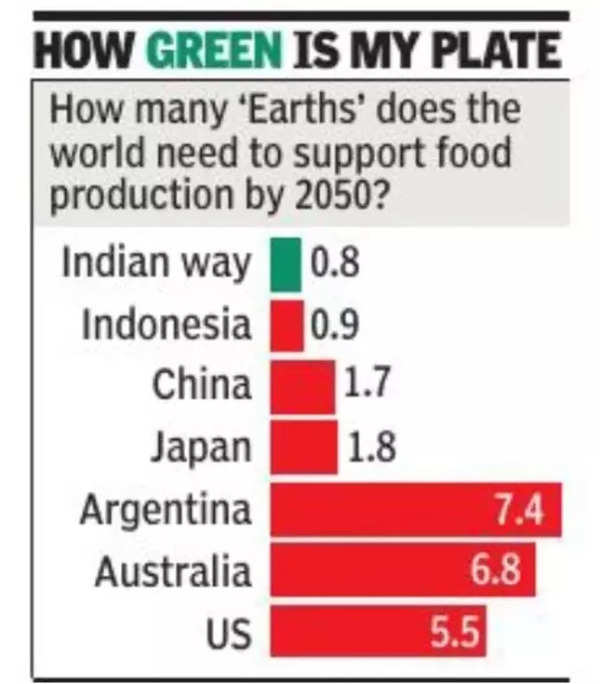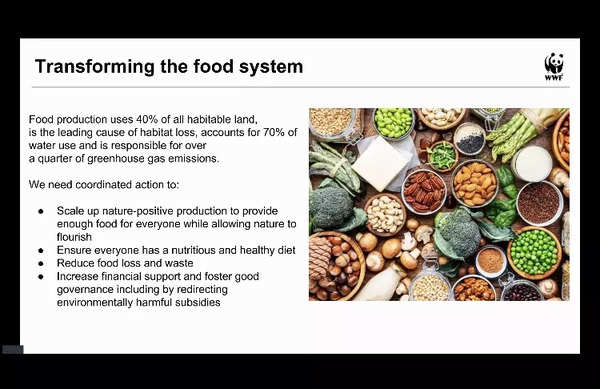
NEW DELHI: WWF’s Living Planet Report, released on Thursday, calls India’s food consumption pattern as most sustainable among big economies (G20 countries), noting that it would be least climate-damaging for Earth to support food production by 2050 if all countries adopt India’s pattern. Argentina, Australia and USA are worst on this count.
“If everyone in the world adopted the current food consumption patterns of the world’s major economies by 2050, we exceed the 1.5° Celsius climate (warming limit) target for food related greenhouse gas emissions by 263 per cent and require one to seven Earths to support us,” the report says, making special mention of India’s millet mission.
The report points out that if all countries adopt the current consumption patterns of India, the world would need ‘less than one earth’ (0.84) by 2050 to support food production. The Indian scenario is even marginally better than the planetary climate boundary for food, indicating the maximum amount of greenhouse gas emissions that food systems can emit to stay within 1.5° Celsius of the warming limit.
In contrast, the world will need the highest 7.4 Earths if it adopts the consumption patterns of Argentina. It means Argentina has the worst system on a sustainable benchmark, followed by Australia (6.8), USA (5.5), Brazil (5.2), France (5), Italy (4.6), Canada (4.5) and the UK (3.9). Among the better ones, Indonesia (0.9) figures only after India (0.84) and ahead of China (1.7), Japan (1.8) and Saudi Arabia (2).

The report also appreciated India’s ongoing efforts to promote climate-resilient millets (nutri-cereals), saying National Millet Campaign is designed to increase national consumption of this ancient grain which is good for health and highly resilient in the face of climate change.
“Eating more sustainable diets would reduce the amount of land needed to produce food: grazing land, in particular, could be freed up for other purposes, including nature restoration and carbon sequestration,” says the report. It also underlines the importance of promoting healthy alternative protein sources such as legumes and nutri-cereals, plant-based meat alternatives, and algal species high in nutritional value.







